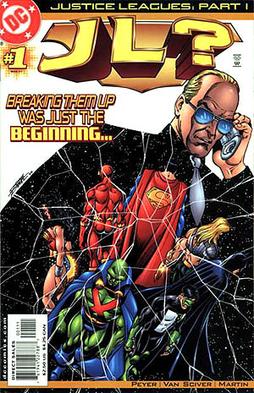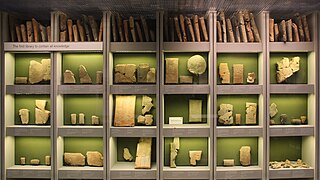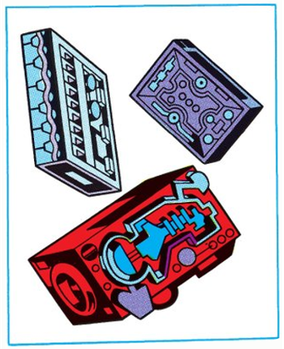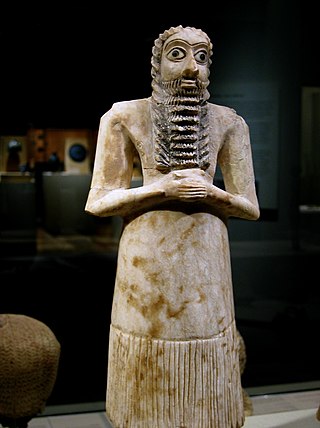
Sumer is the earliest known civilization in the historical region of southern Mesopotamia, emerging during the Chalcolithic and early Bronze Ages between the sixth and fifth millennium BC. It is one of the cradles of civilization in the world, along with ancient Egypt, Elam, the Caral-Supe civilization, Mesoamerica, the Indus Valley civilisation, and ancient China. Living along the valleys of the Tigris and Euphrates rivers, Sumerian farmers grew an abundance of grain and other crops, the surplus from which enabled them to form urban settlements. Proto-writing dates back to c. 4000 – c. 2500 BC. The earliest texts come from the cities of Uruk and Jemdet Nasr, and date to between c. 3350 – c. 2500 BC.

Sumerian is the language of ancient Sumer. It is one of the oldest attested languages, dating back to at least 2900 BC. It is accepted to be a local language isolate and to have been spoken in ancient Mesopotamia, in the area that is modern-day Iraq.
Zecharia Sitchin was an author of a number of books proposing an explanation for human origins involving ancient astronauts. Sitchin attributed the creation of the ancient Sumerian culture to the Anunnaki, which he stated was a race of extraterrestrials from a planet beyond Neptune called Nibiru. He asserted that Sumerian mythology suggests that this hypothetical planet of Nibiru is in an elongated, 3,600-year-long elliptical orbit around the Sun. Sitchin's books have sold millions of copies worldwide and have been translated into more than 25 languages.

Ancient astronauts refer to a pseudoscientific set of beliefs which holds that intelligent extraterrestrial beings visited Earth and made contact with humans in antiquity and prehistoric times. Proponents suggest that this contact influenced the development of modern cultures, technologies, religions, and human biology. A common position is that deities from most, if not all, religions are extraterrestrial in origin, and that advanced technologies brought to Earth by ancient astronauts were interpreted as evidence of divine status by early humans.

Cuneiform is a logo-syllabic script that was used to write several languages of the Ancient Near East. The script was in active use from the early Bronze Age until the beginning of the Common Era. It is named for the characteristic wedge-shaped impressions which form its signs. Cuneiform was originally developed to write the Sumerian language of southern Mesopotamia. Cuneiform is the earliest known writing system.
Brainiac is a supervillain appearing in American comic books published by DC Comics. The character was created by Otto Binder and Al Plastino and first appeared in Action Comics #242 in July 1958. Brainiac is usually depicted as an extraterrestrial android or cyborg and enemy of Superman and the Justice League. He is known for shrinking and stealing Kandor, the capital city of Superman's home planet Krypton, and is even responsible for Krypton's destruction in some continuities.
In DC Comics' DC Universe, a metahuman is a human with superpowers. The term is roughly synonymous with both mutant, inhuman and mutate in the Marvel Universe and posthuman in the Wildstorm and Ultimate Marvel Universes. In DC Comics, the term is used loosely in most instances to refer to any human-like being with extranormal powers and abilities, either cosmic, mutant, science, mystic, skill or tech in nature. A significant portion of these are normal human beings born with a genetic variant called the "metagene", which causes them to gain powers and abilities during freak accidents or times of intense psychological distress.

Icon is a fictional superhero appearing in comic books published by DC Comics, one of the headline characters introduced by Milestone Media in the 1990s. A being from another planet, he has taken on the form of an African American man, and has abilities such as flight, super-strength, and invulnerability. He uses these in partnership with Rocket, a human teenager using his alien technology, to protect the people of the fictional city of Dakota.

The Fortress of Solitude is a fictional fortress appearing in American comic books published by DC Comics, commonly in association with Superman. It is the place where Superman first learned about his true identity, heritage, and purpose on Earth. The fortress functions as a place of solace/occasional headquarters for Superman and is typically depicted as being in frozen tundra, away from civilization. Its predecessor, Superman's "Secret Citadel", first appeared in Superman #17, where it was said to be built into a mountain on the outskirts of Metropolis. By issue #58 it is referred to as the Fortress of Solitude, seems at a glance to be a freestanding castle, and is said to be located in a "polar waste". When the Fortress reappears in 1958 and for the first time takes center stage in a story, it is again an underground complex in a mountainous cliffside.

Justice Leagues was a storyline which ran through six one-shot comics. Published in 2001 by DC Comics, which introduced a revamped Justice League of America. Each issue was supposedly the first of a new series featuring one of the alternate teams, although they were just one-offs. Featured Justice League of As were the "Justice League of Aliens", led by Superman and the Martian Manhunter. The "Justice League of Amazons", led by Wonder Woman and the "Justice League of Arkham", led by Batman; and the "Justice League of Atlantis", led by Aquaman. Cameo appearances were made by the "Justice League of Adventure" which is led by Flash and the "Justice League of Air", led by Green Lantern. The "Justice League of Anarchy", led by Plastic Man and the "Justice League of Apostles", led by the angel Zauriel.

The Composite Superman is a DC Comics supervillain, an enemy of Superman and Batman. The character first appeared in World's Finest Comics #142 and was created by Edmond Hamilton and Curt Swan.

The Royal Library of Ashurbanipal, named after Ashurbanipal, the last great king of the Assyrian Empire, is a collection of more than 30,000 clay tablets and fragments containing texts of all kinds from the 7th century BCE, including texts in various languages. Among its holdings was the famous Epic of Gilgamesh.

Mother Boxes are fictional devices in Jack Kirby's Fourth World setting in the DC Universe.
Insect Queen is the name of several fictional characters appearing in American comic books published by DC Comics.

Kirt Niedrigh is a fictional character, a semi-reformed supervillain and former antihero in the DC Comics Universe. Created by Cary Bates and Mike Grell, Niedrigh is a former hopeful for the Legion of Super-Heroes under the guise of Absorbancy Boy. After being rejected from the team, years later he resurfaced as Earth-Man leading a group of supervillains calling themselves the "Justice League of Earth", which help to enforce a xenophobic agenda that Earth has adopted. He first appears in Superboy and the Legion of Super-Heroes #218, and reappeared as Earth-Man in Action Comics #858, the first part of the "Superman and the Legion of Super-Heroes" story arc.

The Hymn to Enlil, Enlil and the Ekur (Enlil A), Hymn to the Ekur, Hymn and incantation to Enlil, Hymn to Enlil the all beneficent or Excerpt from an exorcism is a Sumerian myth, written on clay tablets in the late third millennium BC.

The Song of the hoe or the Creation of the pickax is a Sumerian creation myth, written on clay tablets from the last century of the 3rd millennium BCE.
The Justice League of Earth are fictional characters, a supervillain team of the 31st Century in the DC Comics universe. They were created by Geoff Johns and Gary Frank and first appeared in Action Comics #859 as enemies of the Legion of Super-Heroes.











